Mass soil mixing is a fast and cost–effective, deep soil mixing method for the in–situ improvement of soft soils including clay, peat, and silt by disaggregation of the soil using an excavator mounted rotavating tool. The technique can also be utilised when dealing with saturated soils such as running sands.
In general, the principle is the same as deep columns however mixing usually takes place within discrete “cells” and the depth is limited up to 5-7m depending on the application and the native soil. The result is a completely fluidised cell and mixing time per cell is considered to be critical to homogenising the material and engendering the required strength.
Our process involves the injection of a wet cementitious grout under medium pressure whilst thoroughly mixing the soils using bespoke equipment designed in-house to create an entire block of improved soils at depths of up to five metres. The rotavating tool spins at high revolutions per minute (in the order of 90-110rpm) and grout is injected under medium pressure.
In addition to improving an entire block of material, other layout arrangements are also feasible such as construction of wall panels and shallow columns.
Binders can include cement (OPC), fly ash (PFA) and furnace slag (GGBS). The specific requirements for each situation are determined through design and trials prior to commencement of the works.
The method with some adaptation of binders can also be utilised to solidify contaminated soils, and therefore in a single process you can remediate these from an environmental perspective and also significantly improve their engineering characteristics.
Mass stabilisation is a versatile, deep soil mixing, ground improvement technology for both civil engineering and environmental applications.
The accuracy of the installation process is controlled through the use of instrumentation mounted on the excavator which records binder pressure and flow, and the GPS machine positioning system which guides the operator to undertake treatment to the required extents and depth.
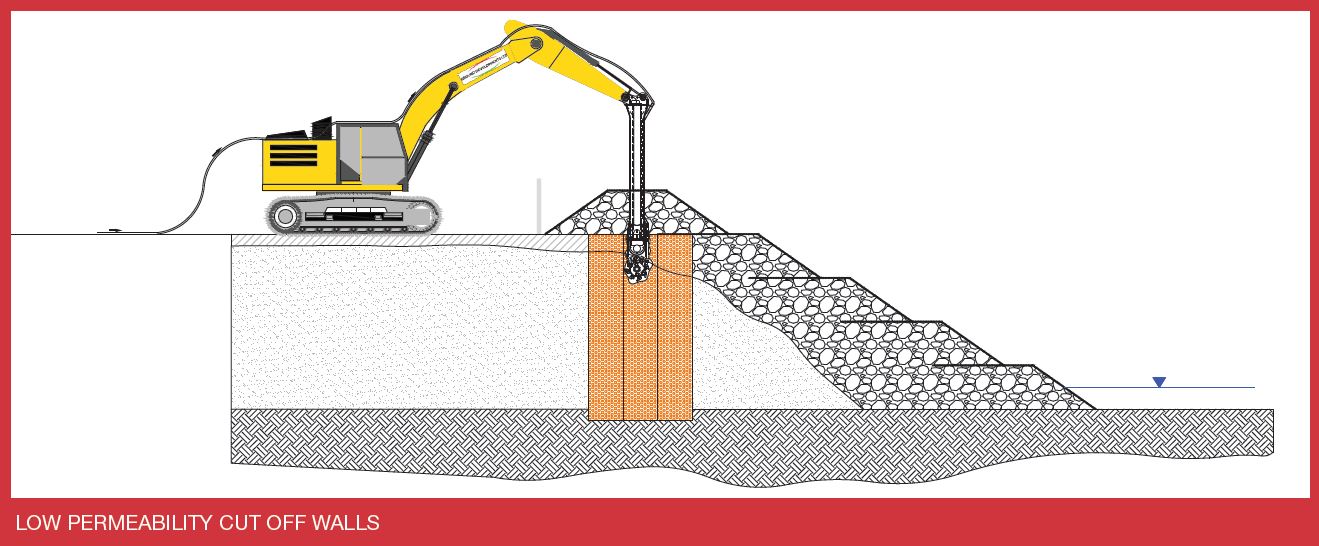
Mass Soil Stabilisation can be used in flood protection schemes to control ground water migration. The system has been used extensively in the Netherlands for Dyke restoration. Applications exist on river banks, reservoirs and in coastal areas. The Mass Deep Soil Mixing process creates a reduced permeability material utilising the in – situ soils.
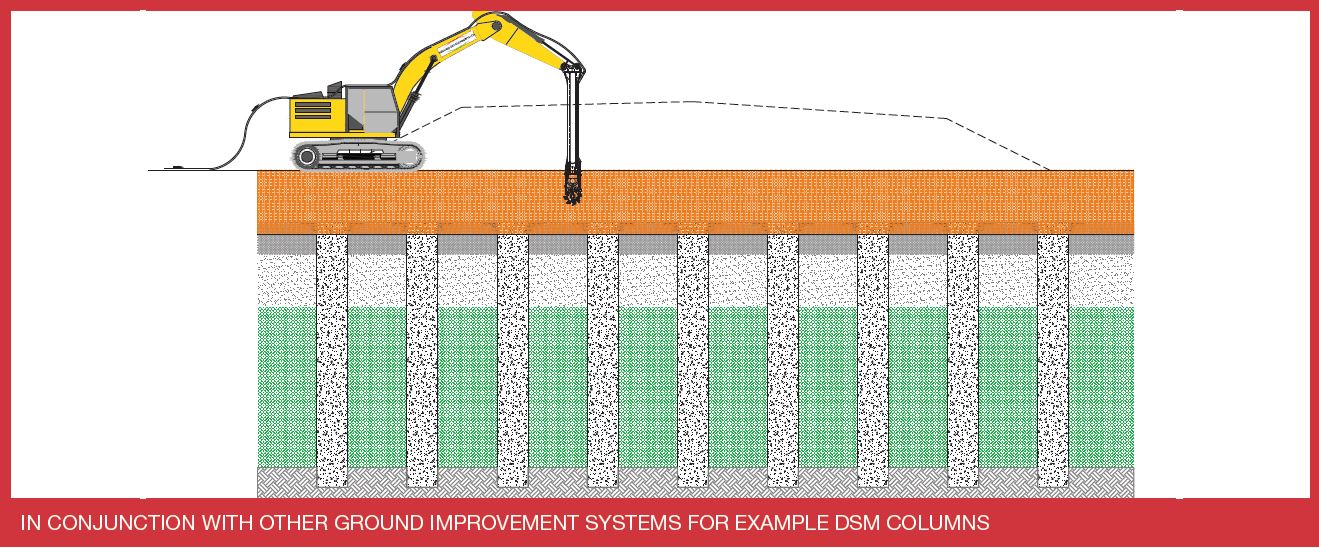
GDL commonly combine the use of Mass Soil Stabilisation as a stabilised transfer slab over the top of Deep Soil Mixed Columns and Ridged Inclusions for the propose of controlling overall settlement on very soft ground sites.
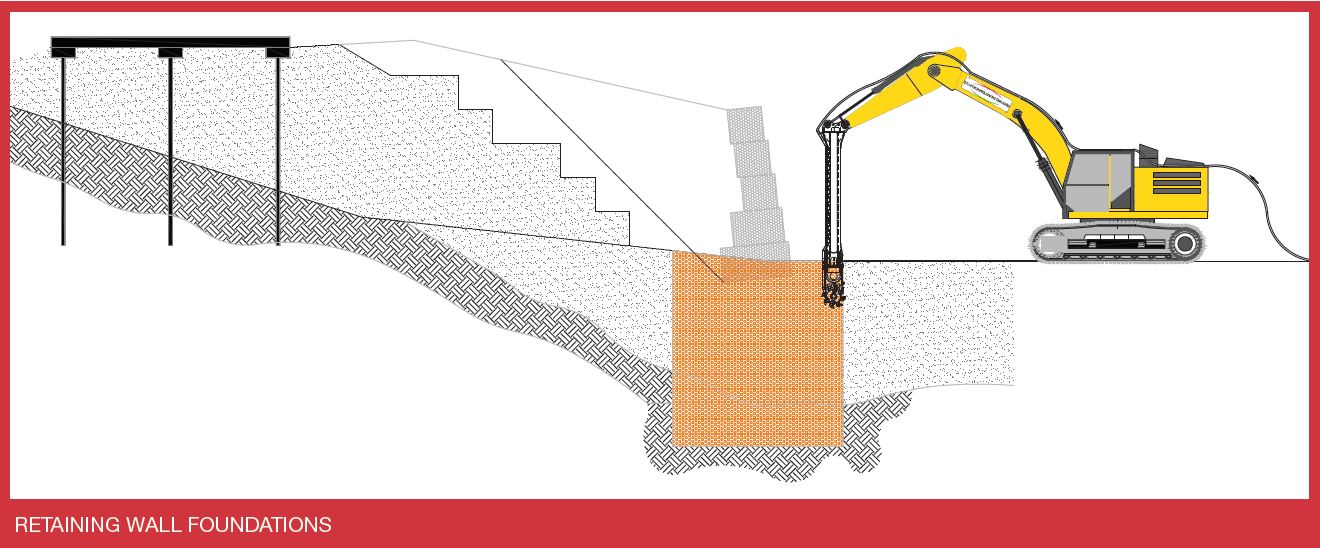
Mass Soil Stabilisation can be used to construct mass foundations below reinforced earth retaining walls at depths of up to 6m. The addition of cementitious binders to the native soils invokes significant strength gain in the underlying soils mitigating risk associated with slips and providing increased bearing capacity. GDL have utilised this system in conjunction with Maccafferi UK & Ireland to provide a foundation soil for their Gabion and Terramesh retaining walls.
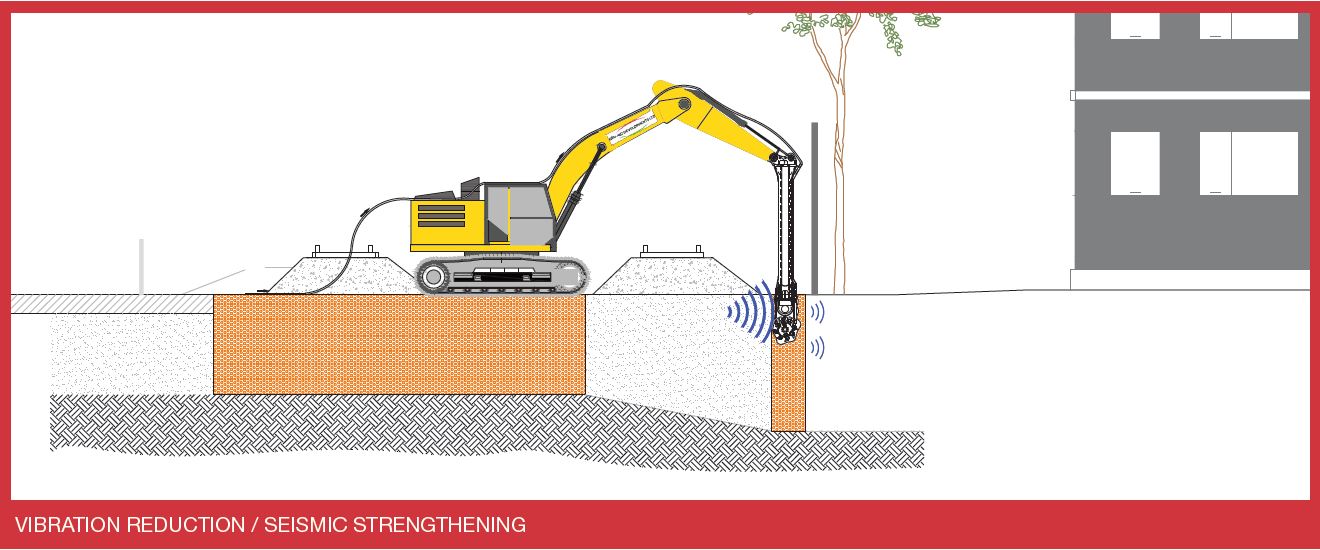
Deep Soil Mixing / Mass Soil stabilisation can be used in seismic strengthening applications. Significant case history exists throughout Japan, New Zealand the the Aisa Pacfic region for its use in limiting the potential for ground liquidation in earthquake situations. In Europe GDL see the potential for the technique to be used for vibration damping on High Speed Rail projects.
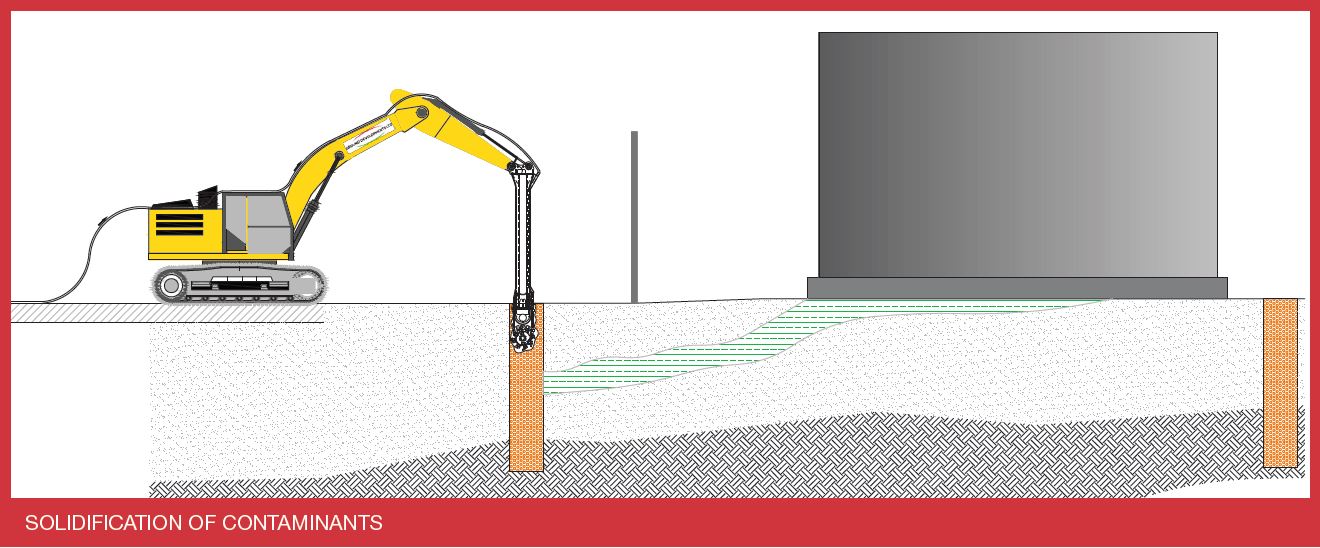
Mass Soil Stabilisation / solidification is a useful remediation technique for dealing with contaminated soils and sludge in – situ. Low permeability cut off walls can also be utilised to reduce ground water migration and leaching of contaminates into sensitive receptors. GDL has extensive experience utilising the Mass Soil Stabilisation system for the in – situ improvement and dewatering of sludge lagoons prior to excavation.

Mass Soil Stabilisation can be utilised in the correct soil conditions as an alternative to mass pour concrete below foundations for lightly loaded structures. The resulting elimination of settlement risk and increase bearing capacity is suitable to support pad foundations and ground bearing floors.
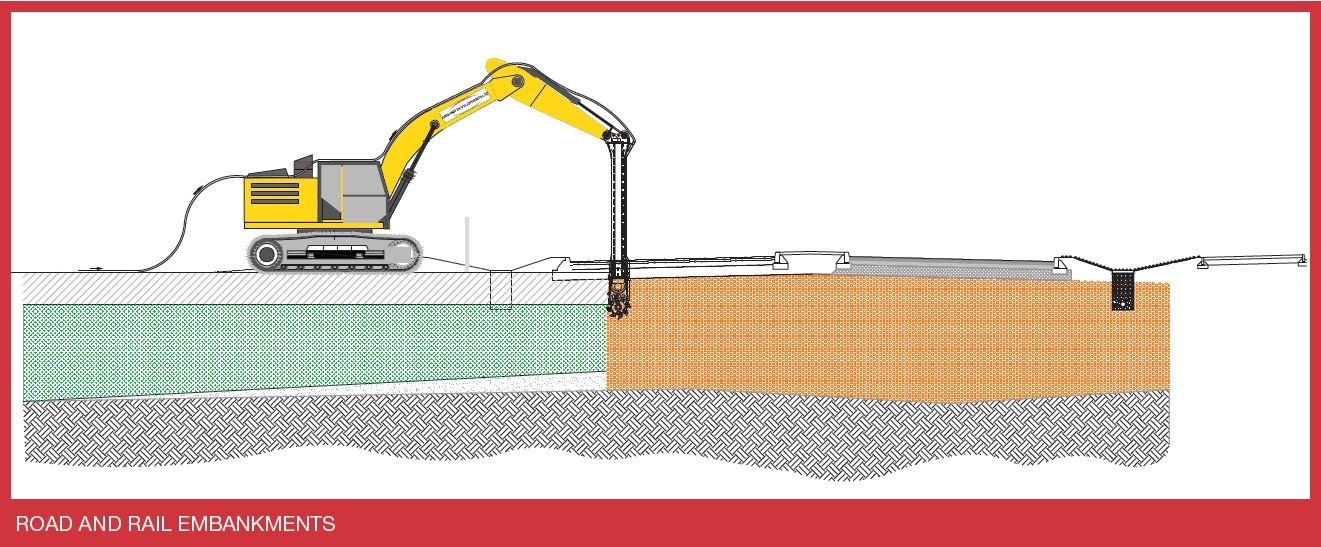
GDL Mass Soil Stabilisation has been used extensively below road and rail embankments. A common situation in the presence of very soft soils or peat soils. The in – situ stabilisation process is capable of treating soils in – situ to depths of up to 6m thus eliminating the need for over excavation and stone replacement, along with the associated temporary works which can be significant / challenging at these depths.
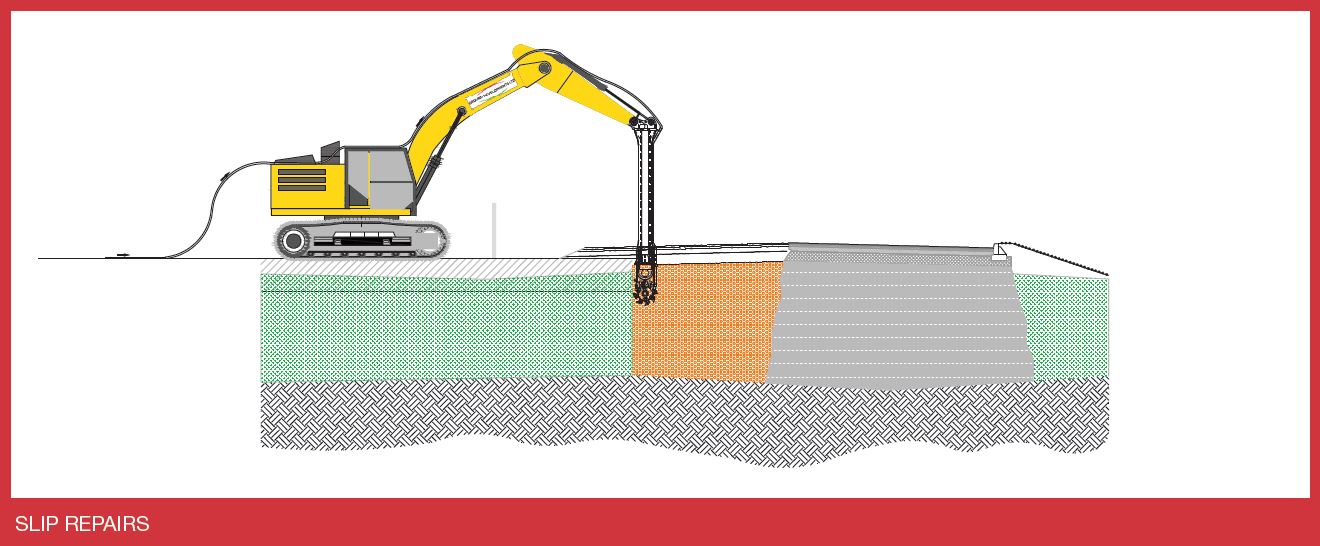
Used in remote locations with poor access for road going construction plant, Mass Soil Stabilisation can be used to construct and repair the toe of failed embankments.

Installation of utilities, drainage and pipelines through areas of very soft ground can be extremely changeling from and temporary works perspective, there are also long term issues with settlement and stability of the apparatus. In – Situ Mass Soil Stabilisation can create a installation corridor with higher stiffness, strength and better settlement characteristics.








Thank you for joining our mailing list. We include an unsubscribe link in every message we send so you can leave our list at any time.